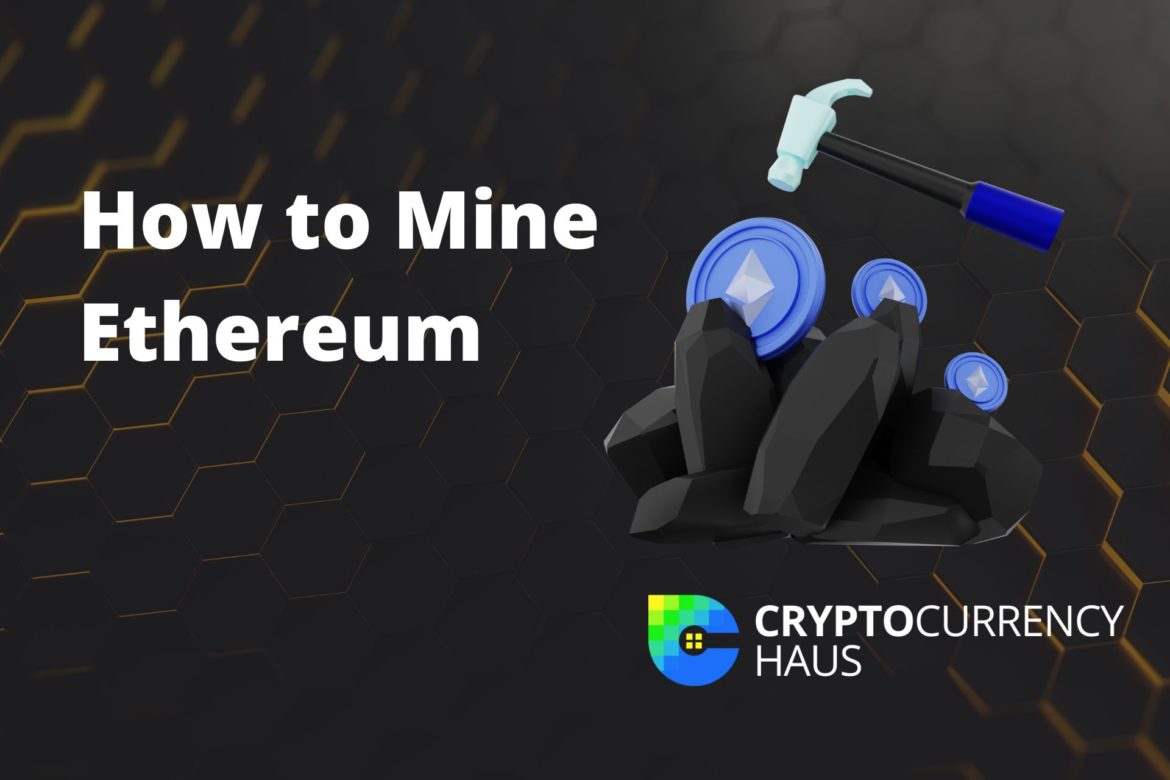Mining entails solving complex mathematical equations to verify transactions on the blockchain network. Miners spend their time and computing power to provide proof of work for the network to verify ETH transactions. The Ethereum network will soon begin operating with the proof-of-stake consensus mechanism, which is believed to be more effective and less power-consuming. Validators will partake by holding and staking their tokens and earning rewards.
In the current PoW mechanism, miners receive Ether rewards for each successfully verified transaction. Miners use the hash function to prevent double-spending and maintain the integrity of the Ethereum network.
How to Mine Ethereum – Getting Started
There are three basic ways to approach Ethereum mining – pool mining, solo mining, and cloud mining. You will need to choose which method to use before you can start mining.
- Solo mining: You can mine Ethereum on your own through solo mining, but this is not recommended for beginners, especially if you are interested in making a profit. You will need a considerable amount of mining rigs and graphic cards. You will also have to consider the cost of electricity, ventilation and sufficient space. However, this approach is very profitable in the long run as you will have fewer fees and no need to share profits.
- Pool mining: This is the easiest way to mine Ethereum. When using pool mining, you do not have to invest in much hardware or high computing power. All miners in a pool combine their computing powers to solve an Ethereum block; the reward issued is then shared amongst the contributing miners in the pool.
- Cloud mining: An easy way to get into mining Ethereum is through cloud mining. In this method, you pay a miner upfront fee to mine the Ethereum coins for you. You do not need to purchase mining hardware or use your personal computer for mining. However, this method has risks, as the miner may defraud you.
After deciding the method that suits you best, the following steps to begin mining Ethereum are:
Get a Crypto Wallet
Getting a is necessary for you to get paid and store your Ethereum coins. There are two types of wallets available: hardware and software wallets. You can find the best Ethereum wallets here.
Hardware wallets, also called cold wallets, are physical devices that store the key of your crypto accounts away from the internet (offline).
Software wallets provide you with two keys – a public key and a private key. They store your cryptocurrency and require you to have an internet connection to access it. Both types of wallets have their downsides. Software wallets are more prone to hacking, although they are more convenient and less expensive.
On the other hand, hardware wallets cannot be hacked, but they are typically more expensive and cumbersome than software wallets. The public key of a wallet allows others to make transactions with you via your wallet, while your private key allows you to gain access to your wallet. The private key is vital and should be safeguarded.
Purchase Necessary Software and Hardware
To profitably mine Ethereum, you will need enough computing power. Powerful computers, known as mining rigs, are suitable for the Ethereum mining process. Your hardware setup depends on whether you are doing pool, solo, or cloud mining. If you are joining a mining pool, your structure will consist of the following:
- Ethereum mining operating system
- A wallet-physical device or software to collect your rewards
- A mining rig or computer that comes with a graphic processing unit
- Graphic drivers to enable communication between your graphic unit and computer system
You will need to set up more equipment and space for solo mining. An alternative to GPUs is ASIC (Application Specific Integrated Circuit). These mining rigs are designed specifically to mine cryptocurrency and can solve more problems using higher computing power in less time. However, ASICs are usually very expensive and are optimized to mine specific coins. They also consume more elevated electricity and release tremendous heat into the environment.
If you are using the pool method to mine Ethereum, you should check these parameters before picking a mining pool.
- The total computing power of the pool (hash rate)
- Pool fees: A pool administrator usually charges a certain percentage for running the pool based on blocks solved
- Number of people in the pool (pool size)
- The minimum amount you need to have before receiving your Ethereum rewards
- Payout method
Earn Passive Income
Once you have set up everything, you are ready to earn income. You do not need to make any active contribution, although you must regularly check that your equipment is functioning and carry out periodic maintenance. For Ethereum miners using pool mining, most pools payout rewards periodically. There is also a dashboard where you can view the efficiency and yield of operations.
The Bottom Line
Ethereum mining can be a good source of passive income. It requires detailed planning and attention to prevent running into losses. If mining at home, be careful not to overload the domestic grid and watch out for possible fire outbreaks. You can use Windows or Linux operating systems, although the latter requires command line interactions.
Prioritize hardware maintenance and optimize your GPU to make as much profit as possible.



